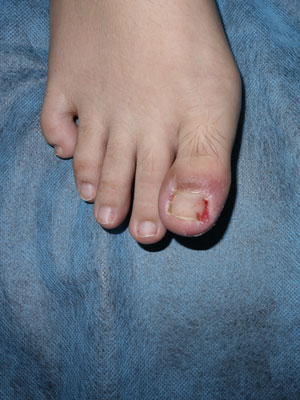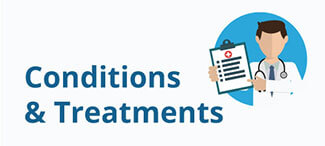
WHAT IS INGROWN TOENAIL?
Ingrown toenails are a common condition in which the corner or side of a toenail grows into the soft flesh. The result is pain, redness, swelling and, sometimes, an infection. Ingrown toenails usually affect your big toe.
WHEN TO SEE A DOCTOR?
See your doctor if you:
- Experience severe discomfort in your toe or pus or redness that seems to be spreading,
- Have diabetes or another condition that causes poor blood flow to your feet and you experience any foot sore or infection.
CAUSES
Common ingrown toenail causes include:
- Wearing shoes that crowd your toenails,
- Cutting your toenails too short or not straight across,
- Injuring your toenail,
- Having unusually curved toenails.
COMPLICATIONS
Left untreated or undetected, an ingrown toenail can infect the underlying bone and lead to a serious bone infection.
Complications can be especially severe if you have diabetes, which can cause poor blood flow and damage nerves in your feet. So a minor foot injury — a cut, scrape, corn, callus or ingrown toenail — may not heal properly and become infected. A difficult-to-heal open sore (foot ulcer) may require surgery to prevent the decay and death of tissue (gangrene). Gangrene results from an interruption in blood flow to an area of your body.
TREATMENT
Lifting the nail: for a slightly ingrown nail (redness and pain but no pus), your doctor may carefully lift the ingrowing nail edge and place cotton, dental floss or a splint under it. This separates the nail from the overlying skin and helps the nail grow above the skin edge. At home, you’ll need to soak the toe and replace the material daily.
Partially removing the nail: for a more severe ingrown toenail (redness, pain and pus), your doctor may trim or remove the ingrown portion of the nail. Before this procedure, your doctor may temporarily numb your toe by injecting it with an anaesthetic.
Removing the nail and nail bed: if you have the problem repeatedly on the same toe, your doctor may suggest removing a portion of the nail along with the underlying tissue (nail bed or matrix). This procedure called partial nail avulsion with lateral matricectomy prevents that part of your nail from growing back.
PARTIAL NAIL AVULSION WITH LATERAL MATRICECTOMY
Description
Partial nail avulsion is a very effective and commonly used operation for treating ingrown toenails that can be performed at the doctor’s practice. A local anaesthetic is used to numb your toe and the edges of your toenail are cut away as well as part of the nail bed (matrix) in order to prevent recurrence. A chemical called phenol is applied to the matrix of the affected area to prevent the nail growing back and becoming ingrown in the future (this is called “phenolisation”).
A course of antibiotics may be prescribed if your nail is infected, and any pus will be drained away.
Severe vascular disorders are the only contraindication to the use of this technique.
How to prepare for the procedure?
Wear an open sandal or similar shoe on the day of your procedure. This will allow room for the dressing and helps avoid pressure on the toe.
How is the procedure performed?
The foot is carefully scrubbed with an antiseptic. Local anaesthesia is achieved by lidocaine injections in the toe. A tourniquet is applied because a bloodless field is necessary to ensure phenol efficacy.
The dermatologist removes the narrow strip of nail that penetrates the flesh: an approximately 4 mm wide strip is removed on the whole length of the nail. In order to destroy the nail bed of the nail, 88% phenol is applied for approximately 1-2 minutes using a small cotton bud.
A dressing (antibiotic ointment, dressing gauze and adhesive band) is applied on the toe.
What to expect after the procedure?
Postoperative pain is limited (pain on pressure or while walking), a standard pain killer is however indicated. Limited drainage is usual for two to six weeks after phenolisation. Most patients can return to school or work immediately after the procedure.
This procedure is very effective (low recurrence rate: less than 3 %).



